Tips To Make Your Sailing Trips With Children Easier
We recently interviewed liveaboard sailor Cindy Wallach and cruiser Nica Waters about sailing with children for weekends and long-range trips. Their responses were enlightening for new sailing families and those who may hesitate to take longer trips with children.
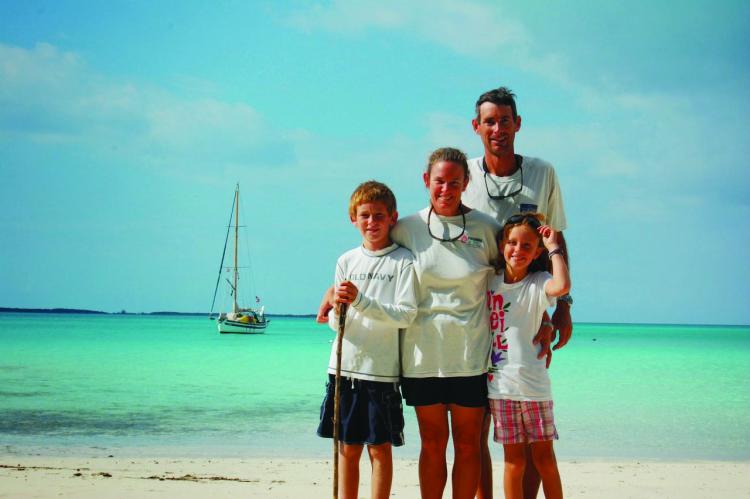
Waters grew up sailing on a lake in Vermont and met her husband Jeremy, a lifelong sailor, while sailing for the University of Virginia sailing team. They cruised on their boat for three years before having children. Their kids have been sailing since birth, as have those of Wallach and her husband Doug Vibbert, both of whom grew up sailing on Mid-Western lakes. They met sailboat racing in Annapolis, married, bought a boat, and have been cruising together ever since.
When kids resist sailing
Do children who grew up sailing resist it sometimes? Waters says, “Absolutely. We took the kids and went to the Bahamas for a year when they were eight and 10. When we talked to them about it, the exact response from our son was ‘I’m not going. I’m going to move in with our friends down the street.’” She laughs.
“It wasn’t an option. We told them this is what we’re doing as a family. There were times when they didn’t want to go to our (home) club (Fishing Bay Yacht Club). When they could bring friends or when they knew their friends would also be at the club, it was better.”
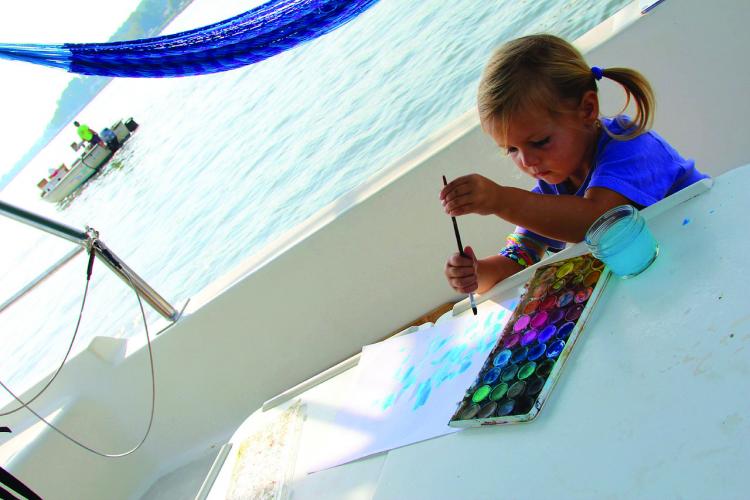
Wallach’s kids, who are 16 and nine years old, aren’t always in the mood either. “We don’t really give them a choice,” she says. “We live on our boat, so we say, ‘It’s your house and the house is moving.’ Especially in the tween years where they’d rather pout in their room under way and not come up and enjoy it, we’ve learned not to push it. If they’d rather pout, they can pout. We all have good and bad days, so we let them do what they want to do.”
Waters (whose children are 18 and 20 now) adds, “We didn’t force them to interact onboard. If they wanted to stay below, that was fine.”
Rules about kids and their electronics
Wallach says, “We try not to make anything forbidden, but we also try to not make it the default. So, sometimes we say, ‘Go ahead and watch your movies, but you have to unplug at some point. Every two hours come and help us in the cockpit.’ I think it’s a good rule at home, too! We try to keep it balanced.”
Waters says, “When our kids were eight and ten, going down the ICW, they would prefer to be down below and watch a movie. Now they enjoy the scenery more.”
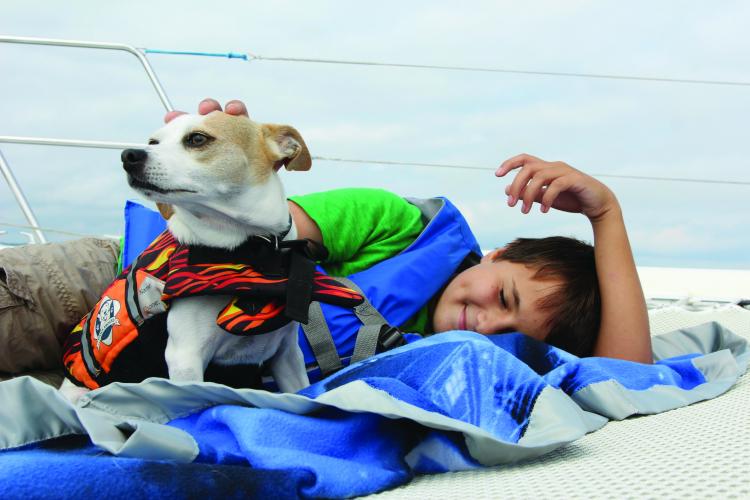
Entertainment tips
“Our overall attitude is: it’s not my job to entertain you. It’s okay to be bored,” says Wallach and adds with a laugh, “If you’re really bored, you can go clean the head. Here’s a rag and some spray. That usually gets them to find something to do.”
Other things she notes to keep children entertained: “Legos, fenders to be ridden like a horse, playing on the foredeck (of a catamaran at anchor) with blankets, audio books, kids’ podcasts, music. We like to give them things like the chart, a telescope, or binoculars and ask them to find things—or as they’ve gotten older actually help with navigation. My son is hunter-gatherer, so he likes fishing, spotting birds, catching things.”
Waters says, “We’d get our kids on deck and say, ‘Whoever sees the first dolphin gets to pick dessert.’ We always had crayons and markers—not great on a boat—but we had them. We encouraged them to draw and journal. Lots of fish and bird ID books onboard.”
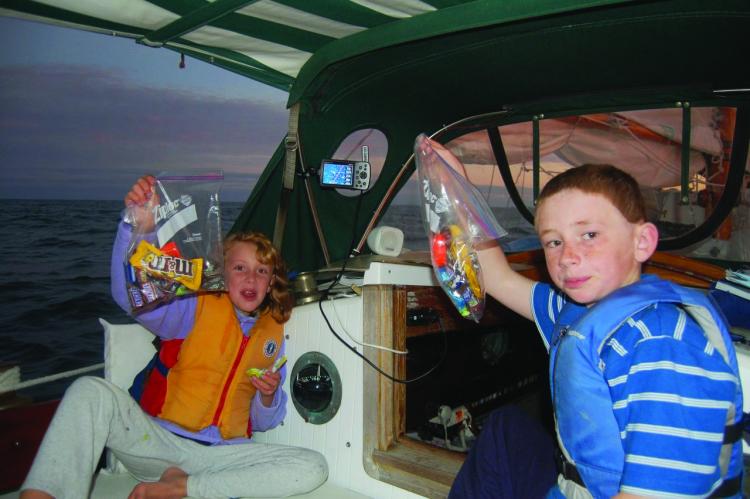
On bringing children’s friends onboard
The Waters’ boat is a 28-foot Bristol Channel Cutter, so not ideal for their children bringing friends, even when they were small. The Wallachs, however, own a 44-foot Francis catamaran with a 24-foot beam.
Wallach says, “We’ve had 18 or more people on this boat. Three kids on the boom, one on each bow, the more the merrier. We’ve always encouraged our kids to bring their friends and families. If they bring food, they’re welcome aboard. Our kids take pride of ownership. I’ve heard them give safety talks, to watch for the boom, to wear their PFD; it helps them stretch and grow.”
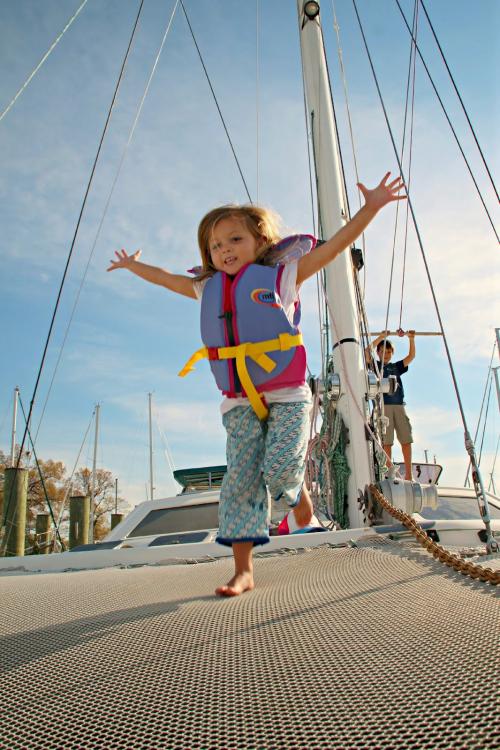
Approaching scary situations
When asked if they’ve had scary situations onboard with their kids, Waters says, “We had a fairly hairy ‘almost’ incident in the dinghy when we were in Long island in the Bahamas and were checking out Dean’s Blue Hole. We did not time the cut right and almost rolled the dinghy. We didn’t. When we got in, we acknowledged that it was frightening. The kids helped us debrief. When we got back out, they were able to see the reef and help. Talking about it afterwards was a big thing. We also checked the weather consistently… Everyone has to have a PFD on at night. (always when they were little). We model what we’re doing in terms of wearing a PFD.”
Wallach says, “If the weather’s bad and it gets dicey, we try to say Mom and Dad have some navigating to do. Maybe you should go below and watch a movie. We try to be super careful and pick our weather window carefully.”
Things you always pack
“If we’re just going for a weekend: water, snacks, container of toys of some sort, books, always art supplies, their favorite stuffed animal, and their own pillows,” says Waters. She likes to cook onboard, so she always brings something special, such as a breakfast pastry or pack of cookies so that they had something to look forward to.” She adds that they cleaned the salty crust of their PFDs in between trips, so that they were fresh. She advises bringing a kayak or another water toy for the kids to enjoy at anchor.
Wallach recommends “things where they can explore the environment, such as fishing poles, things to go crabbing or bird spotting. A bucket of water to wash their dolls or scrub the boat can keep little hands busy. The more you can involve them with navigating the better. Kids and a laminated chart and some crayons can help. Get them involved rather than distract them… Food is so important. Bring the treats; bring things you usually say no to, as food is a happy distraction”
PFD types for kids
Waters says, “Choose a PFD that fits well. We spent good money on them. They always had them on when they were small from the time they poked their head up out of the companionway… It’s worth spending some time having your kids try on PFDs. Our kids decorated theirs. Now as we’re older and our kids are older, at night we hook in in the cockpit before getting out of the companionway. We don’t think for a minute that the PFD is the only thing saving (us). We talk about one hand for yourself and one for the boat. We’re not cavalier about thinking that the PFD suffices for other safety measures.”




